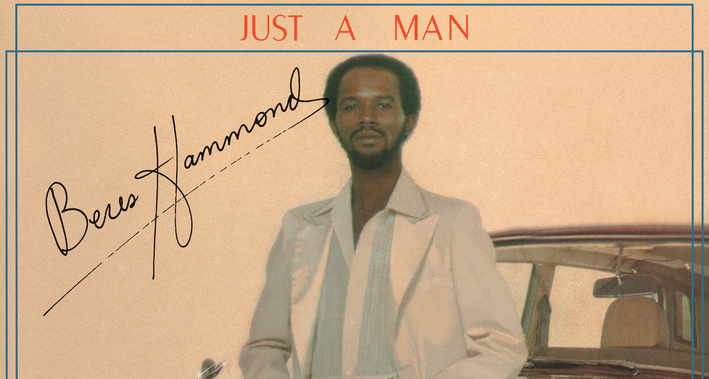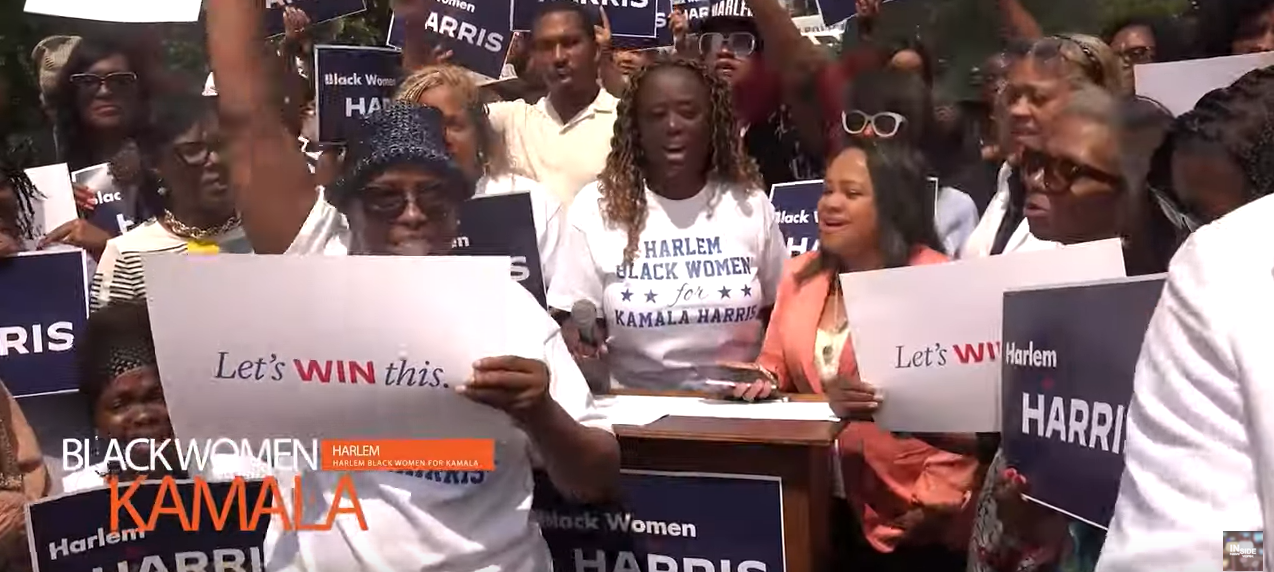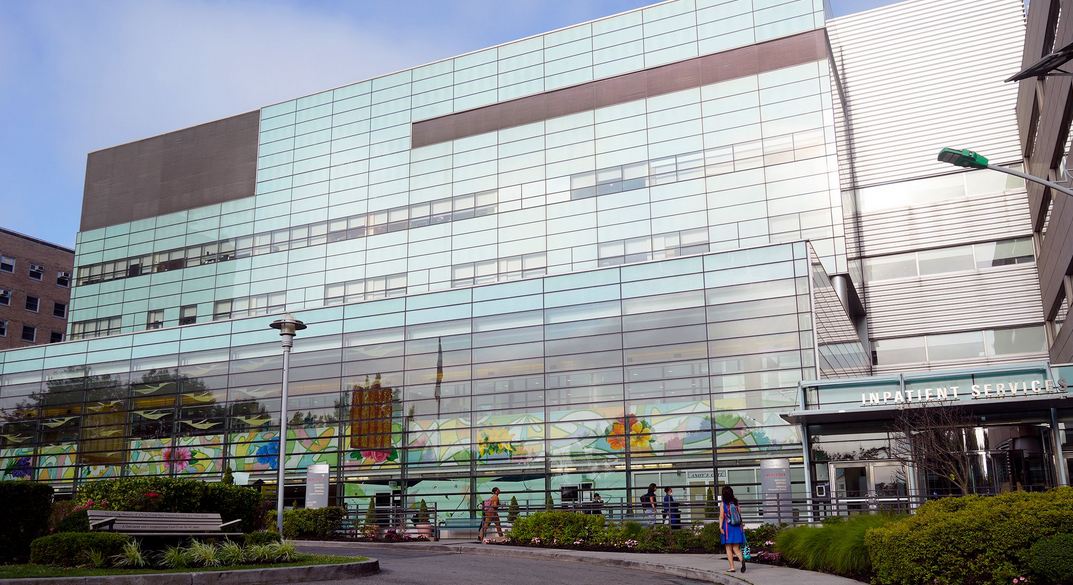By Ennaid
Photos: DTH
My newly found friend, an African immigrant and resident of Harlem contemplating a post graduate degree, accompanied me to The Dance Theatre of Harlem’s (DTH) opening night for the New York City Center’s 2024 season. As the first dancers streamed onto the stage, she whispered to me that this was her first experience at an event of this kind, her eyes beaming in wonderment.
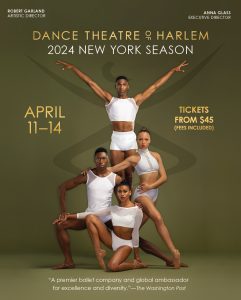
Her reaction would have pleased the late Arthur Mitchell, who created DTH in 1969 during the height of the civil rights era, with the goal of “utilizing the art form of ballet not only as a tool for transformation, but also as a platform for social justice”. DTH is currently a world renown ballet company with its soul rooted not just in Harlem, but of Harlem, and nurtured by an undeniably African American esthetic.
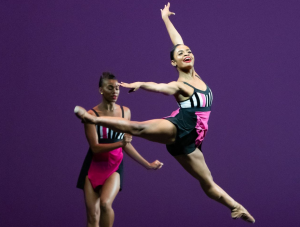
The evening consisted of four performances. The opener, Nyman String Quartet No. 2 choreographed by DTH’s new director Robert Garland, is dedicated to the memory of Mr. Mitchell and John Wesley Carlos, the latter the bronze medalist who at the 1968 Olympics raised his fist in the symbolic ‘Black power’ gesture while he stood on the medal podium- an act that was hailed “the sports moment that changed the world”. A six-part modern-dance infused ballet, it focuses on foot-movements that matches the rhythmic patterns of the accompanying string music. The result is a contemporary, light-hearted, and charming performance.
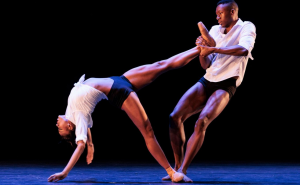
Take Me with You, a ballet by Polish choreographer Robert Bondara is performed to Radiohead’s hauntingly beautiful song “Reckoner”. Making its debut this season, it “grabbed the attention” of Mr. Garland during the pandemic while he browsed on-line. Mirroring this period, the theme is instinctively existential and imbued with metaphysical underpinnings. As Amanda Smith enters the stage while rhythmically tapping her thighs, her taps resound in the silence. She is followed a few seconds later by Re Elias, whose finger snapping speak volumes. (The minimalist black shorts and cropped white shirts tied at the waist by both dancers are telling). And when the song begins and they join in dance it is an admixture of modern and classical ballet, provoking and emotional, a seamless fluid duet that fully engages the male and female form. The moves are continuous and exquisite where both bodies appear conflicted as they yearn to be together yet does not conquer being apart. It is no wonder that he walks away leaving her alone tapping her thighs in the silence, just like he met her at the beginning.

The American contemporary ballet icon George Balanchine’s Pas de Dix is another new addition that Mr. Garland debuted this season, knowing that Mr. Mitchell always wanted it included in DTH’s repertoire. It is the best of classical ballet that DTH now embraces in its own style, performed by principal dancers Kamala Saara and Kouadio Davis together with eight members of the troupe. Here is where the dancers sported the traditional ballet tutus and tights, gracefully executing tendus, arabesques and pirouettes, each pointe on point, in this beautifully presented ballerinas’ ballet.
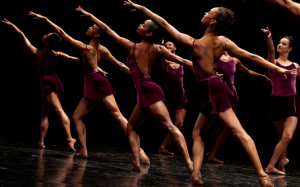
The night ended with the performance of Blake Works IV (The Barre Project). Another piece born out of the isolating pandemic period, the Barre series began in 2021 when fans of ballet will recall dance films that were streamed to the world’s audience during the lock-down. The barre is the background and focal- point and purple outfits reign in this performance done to the beat of James Blake’s pulsating music, the focus being moves that highlight the talents of the dancers and are unique to DTH.
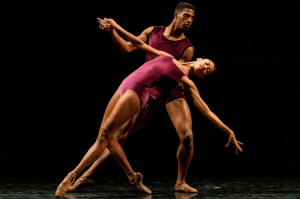
At the beginning of the April 11 performances, Mr. Garland introduced himself as the new artistic director of the DTH. His announcement was backed by a heartfelt letter he penned in En Face magazine headlined “New Beginnings”, where he paid homage to Mr. Mitchell, his beloved mentor “who played a larger than life role in my career”. In the letter and his address that night, he is humble- committed to continuing Mr. Mitchell’s vision, with the full understanding of the formidable task at hand. After all, Arthur Mitchell was a creator, innovator, visionary and trailblazer. In a funny moment, he shared that “Arthur” would have charged him with ‘getting it right’. Reflecting on my friend’s reaction after the show and my appreciation of the performances there is no doubt that Mr. Garland nailed it.

My friend expressed being “awestruck” and “thrilled” by this novel experience- her glimpse into this world in which bodies of color, dynamic and graceful, inhabit a historically European dance idiom, now free of the “appropriation” tropes and labels. She would have also noticed that at this show dancers of color wore ballet shoes that matched their skin tones and would learn later, that Arthur Mitchell- the iconoclast that he was- ushered in this change. One can only hope that the essence of this evolution will be reflected by an increase in attendance by an audience that looks like her.





